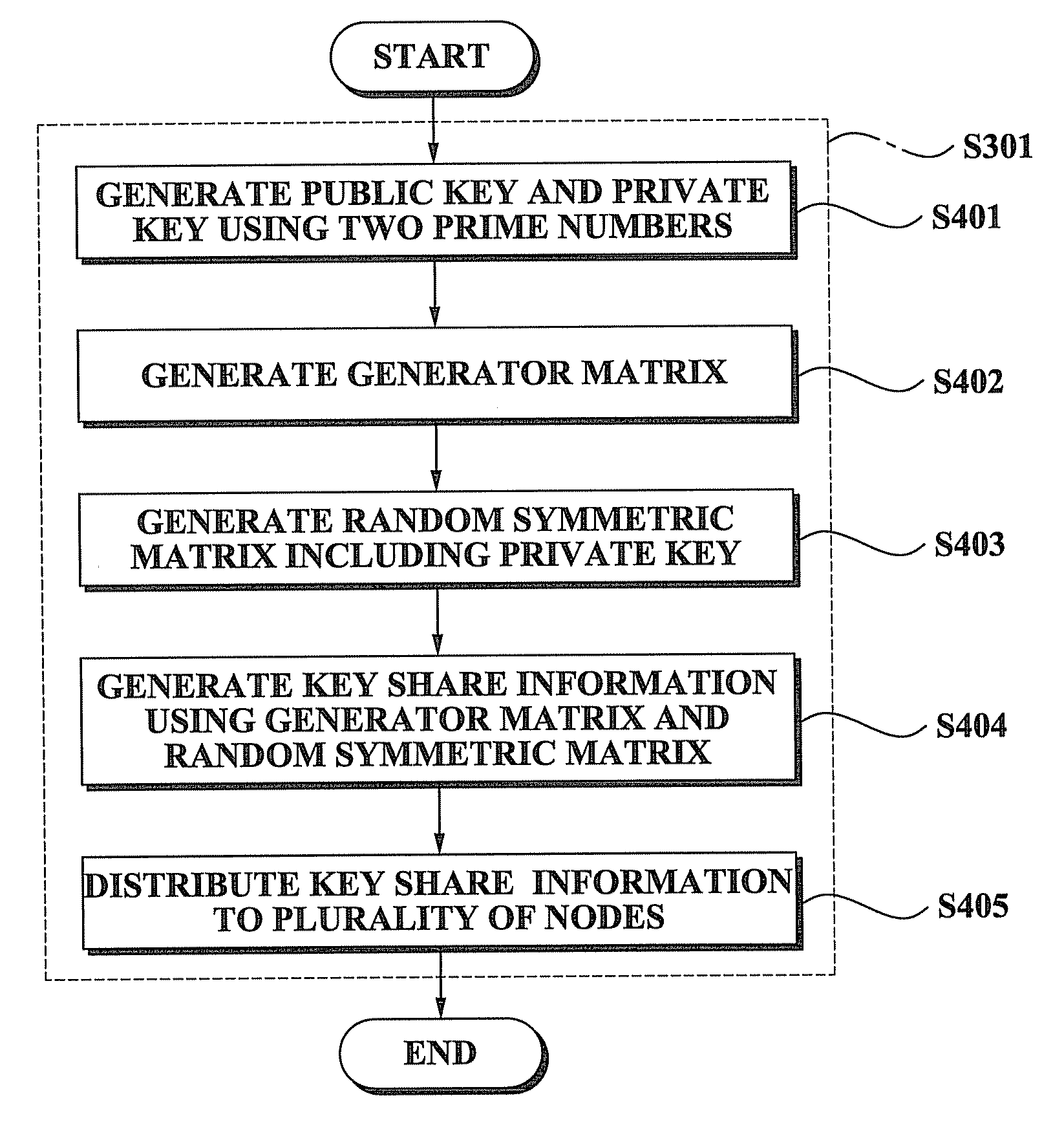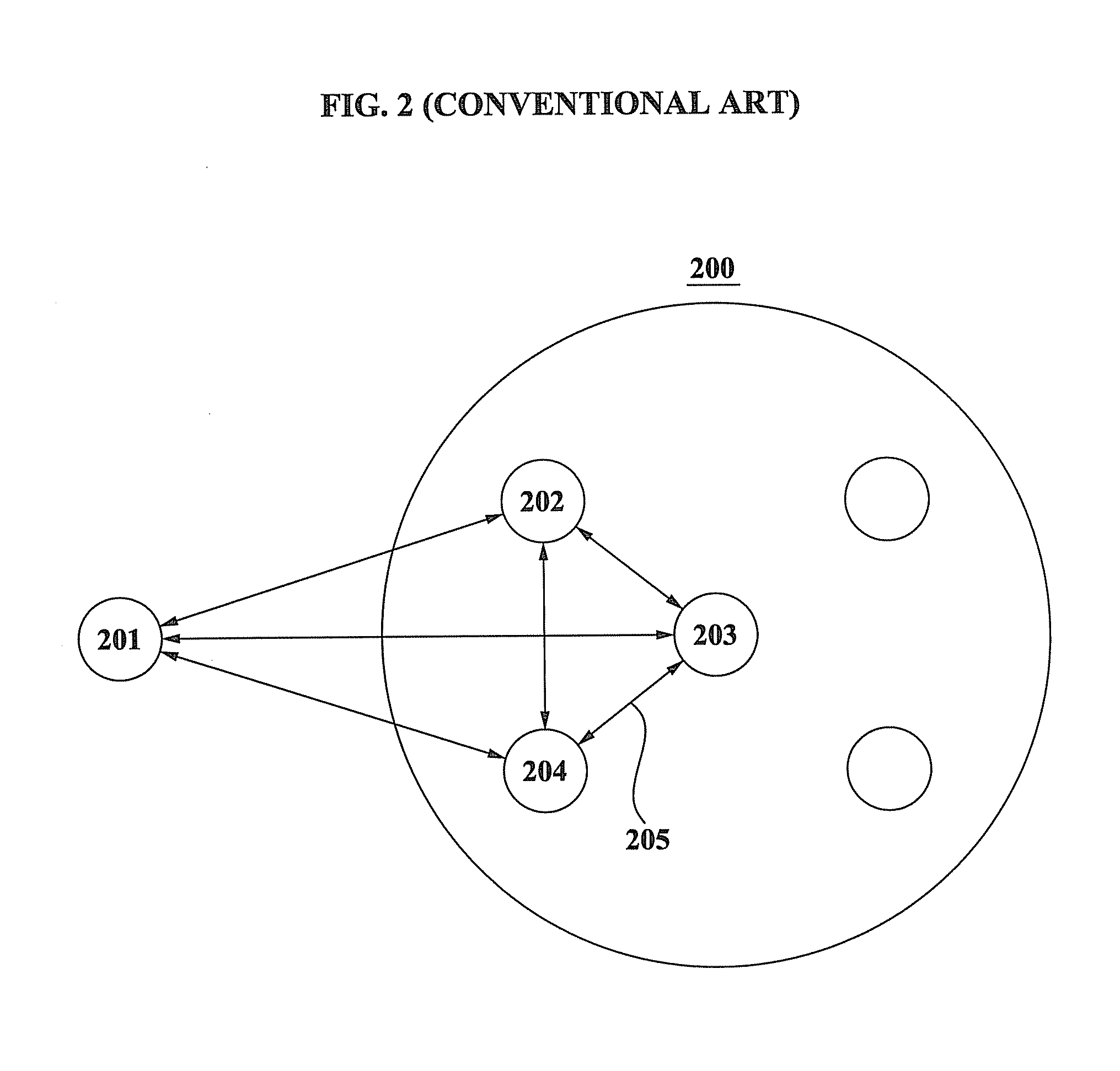Method and node for generating distributed rivest shamir adleman signature in ad-hoc network
- Summary
- Abstract
- Description
- Claims
- Application Information
AI Technical Summary
Benefits of technology
Problems solved by technology
Method used
Image
Examples
Embodiment Construction
[0041]Reference will now be made in detail to present embodiments of the present invention, examples of which are illustrated in the accompanying drawings, wherein like reference numerals refer to the like elements throughout. The embodiments are described below in order to explain the present invention by referring to the figures.
I. Background
[0042]1 Maximum Distance Separable (MDS) Code
[0043]It is assumed that arrays of n elements existing in a finite field GF(r), having of r elements, are n-tuple vectors, and a set of the n-tuple vectors is a vector space GF(r)n. A predetermined vector a included in the GF(r)n is represented as α=(α1, . . . , αn). Hamming weight HW(α) and a Hamming distance dist(α, β) may be defined with respect to vectors included in a predetermined partial vector space of the vector space GF(r)n.
[0044]The Hamming weight denotes a number of elements of the n-tuple vectors except zero, and the Hamming distance denotes a number of elements of two different n-tuple...
PUM
 Login to View More
Login to View More Abstract
Description
Claims
Application Information
 Login to View More
Login to View More - R&D
- Intellectual Property
- Life Sciences
- Materials
- Tech Scout
- Unparalleled Data Quality
- Higher Quality Content
- 60% Fewer Hallucinations
Browse by: Latest US Patents, China's latest patents, Technical Efficacy Thesaurus, Application Domain, Technology Topic, Popular Technical Reports.
© 2025 PatSnap. All rights reserved.Legal|Privacy policy|Modern Slavery Act Transparency Statement|Sitemap|About US| Contact US: help@patsnap.com



